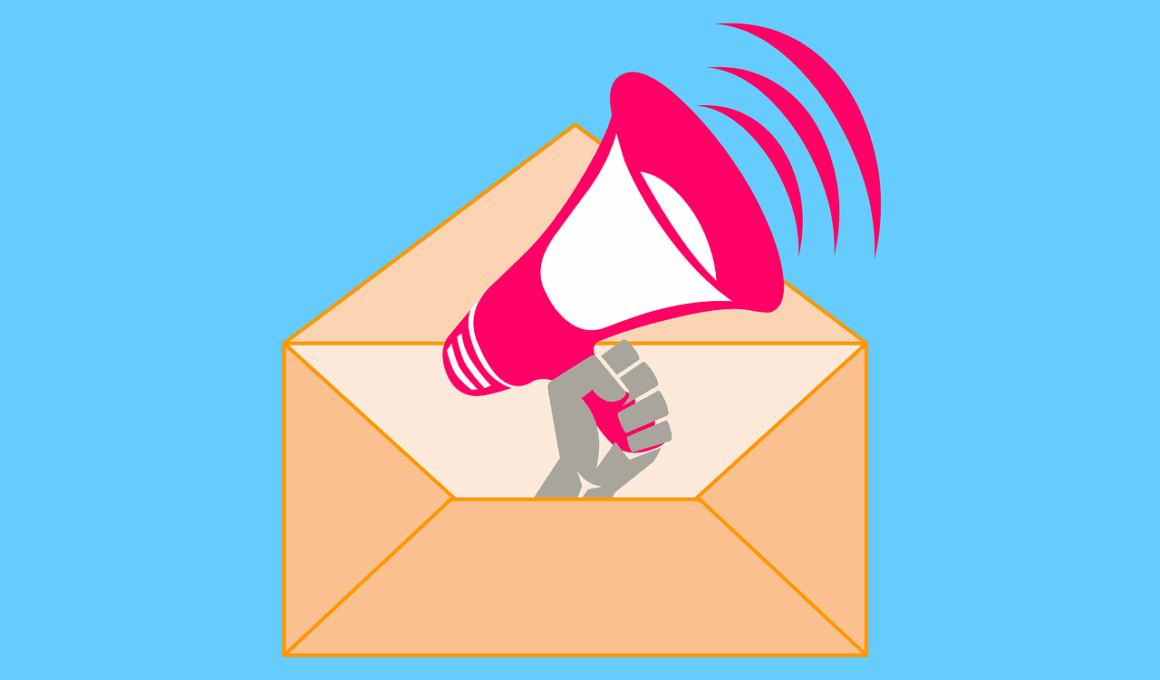How to Use Case Studies to Build Trust and Grow B2B Email Lists
Building a trustworthy email list in B2B marketing is essential for long-term success. One effective method to achieve this is through the utilization of case studies. By sharing real-life examples of how your product or service has solved problems for businesses, you can create a narrative that resonates with potential clients. Case studies highlight your expertise, making your offerings more relatable. Moreover, prospective clients can see tangible results, fostering confidence in their purchasing decisions. When sharing case studies, ensure they are well-structured, with clear insights that your audience can understand. This strategy not only builds your credibility but also encourages potential customers to join your email list, eager to gain insights from your expertise. You can promote these case studies through various channels, such as social media and websites, to capture interest effectively. Additionally, incorporating data and statistics can significantly enhance the impact, demonstrating the real benefits of your solutions. Authenticity in your storytelling will also help in appealing to your target audience, ultimately growing your email list.
Another critical aspect of leveraging case studies in your B2B email marketing strategy is using compelling visuals. Quality graphics, before-and-after images, and well-designed infographics can enhance understanding and retention of key messages. For instance, if your company improved a client’s process efficiency, showcasing a visual representation of those metrics makes the achievement more relatable and impressive. Furthermore, visuals can break up text, making your case studies more engaging and accessible. Be sure to include visuals in your email campaigns that guide readers to your case studies. Encourage click-throughs by summarizing success stories with enticing captions accompanied by hyperlinks to your full case studies on your website. Attractive visual formats can often persuade potential customers to explore more, leading them to sign up for your email list. Additionally, creating a dedicated section in your marketing material for noteworthy case studies can effectively capture interest. Infographics can explain complex processes in a digestible format, while testimonials and quotes from clients can add another layer of credibility. Presenting these elements can turn prospective clients into subscribers.
To effectively utilize case studies for list building, you can integrate gated content strategies. By offering detailed case studies as downloadable PDFs or exclusive content available only through email subscription, you encourage users to provide their contact information in exchange for valuable insights. This not only builds your list but also positions your brand as a thought leader in your industry. Ensure that the case studies you decide to gate are indeed rich in information and offer significant value to your audience. Clear instructions and attractive calls to action will help guide potential subscribers toward this conversion. In addition, regularly updating this gated content keeps your audience engaged and eager to subscribe for fresh insights. As your email list grows with these strategies, consider segmenting your audience for tailored email campaigns based on their specific interests or industry. By personalizing your content in line with their needs and preferences, you’ll foster stronger relationships with your subscribers, ultimately making your B2B email marketing more successful.
Furthermore, encouraging social proof through case studies can significantly amplify your B2B email list growth. When potential subscribers see that others have had positive experiences with your offerings, they are more likely to trust your brand. Highlighting testimonials or quotes from satisfied clients in your case studies can serve as powerful endorsements of your products or services. Moreover, by showcasing diverse case studies across various industries, you can appeal to a broader audience. Each success story illustrates that different businesses have successfully leveraged your solutions, thus attracting new subscribers from various sectors. To maximize the impact of social proof, promote these case studies through multiple platforms, such as newsletters and social media. Feature excerpts or key outcomes in your email messages, linking back to the full case studies for more information. This multifaceted approach reinforces credibility for your offerings and encourages potential clients to subscribe to your mailing list for continued insights and success stories, thus expanding your reach.
Using case studies also creates opportunities for follow-up campaigns in your B2B email marketing. After initially sharing a case study or gaining new subscribers through gated content, consider sending follow-up emails to nurture those leads. Providing additional related insights, updates, or exclusive offers can enhance engagement. For instance, if a subscriber accessed a case study on improving sales processes, following up with tips or strategies related to lead generation can continue to provide value. Including links to additional case studies tailored to specific industries or targets can maintain interest and encourage deeper exploration of your solutions. This strategy not only keeps potential clients engaged but also fortifies the relationship between them and your brand, regularly reminding them of the value your solutions offer. Moreover, follow-up campaigns can also encourage feedback, allowing you to learn more about your subscribers’ interests. This data can help refine your email marketing approach, making it even more effective in drawing in potential clients, ultimately contributing to the growth of your email list.
Another effective way to maximize case studies for B2B email list building is to use them in webinars or live sessions. Hosting webinars focused on the key insights and successes from your case studies offers a platform for deeper engagement. During these sessions, you can showcase your expertise and deeper strategies, while participants can engage with your team, ask questions, and seek clarifications. Providing an option for attendees to subscribe to your email list for ongoing communication and insights can significantly enhance list growth. Promote your webinar through case studies that highlight the value attendees can expect to gain, creating interest. Additionally, consider recording these sessions, transforming them into evergreen content that can continue to attract subscribers over time. By offering follow-up materials or additional resources after these webinars, you further cement your positioning as a valuable source of information in the industry, thus encouraging more prospects to join your mailing list for continued insights.
In conclusion, integrating case studies into your B2B email list-building strategy is an essential aspect of fostering trust and credibility. Well-crafted case studies not only demonstrate your success but also resonate with your audience, compelling them to engage with your brand. By effectively utilizing visuals, gating content, showcasing social proof, sending targeted follow-ups, and hosting webinars, you have numerous avenues to attract and retain subscribers. The tangible results and relatable narratives found in case studies can draw in prospective clients who identify with the challenges faced and the solutions provided. Being seen as a thought leader through valuable insights and ongoing communication can significantly position your brand in a competitive B2B market. Consistency in your messaging and commitment to providing value will lead to sustainable growth in your email list while fostering trust among your client base. Ultimately, leveraging case studies creates pathways for meaningful interactions with potential clients, enabling you to grow a robust B2B email list.


